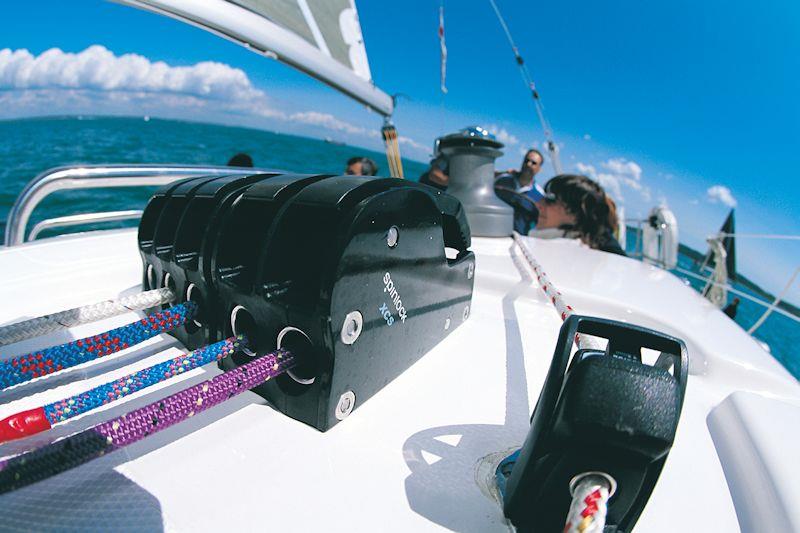
Clutches and Jammers - A Simple and Reliable Rope Holding Solution
by Johnny Appmann 28 Oct 2022 00:00 NZDT

Rope Holding Solutions appraised by upffront.com © Spinlock
Sailboats and ropes go hand in hand, from only a handful of control lines and halyards on smaller vessels to a whole array on larger racing yachts. However, all these lines would be of little use if we couldn't secure them properly to hold the loads.
So what options are there to fasten all these ropes and what should be used when?
Rope-holding technology has come a long way just in the last decade - one may picture ocean racing yachts from the 80s on which each rope, let it be a control line, sheet, or halyard, ran to a separate winch. This led to a massive increase in weight due to the sheer number of winches on deck, not to mention the clutter of all the different ropes.
The simplest solution for lightly loaded lines is simple cam or jam cleats. However, as the load's increase and the lines are run onto a winch you will need a clutch or jammer in front of the winch (unless you have plenty of winches spare as mentioned above). These come in many different shapes, sizes, and mechanisms depending on the loads involved. The key difference between clutches and jammers is that a clutch may be released under load whilst a jammer cannot.
In principle, a clutch uses a toothed cam which can be engaged or released through a handle. When it's open the line can pass through freely, when engaged the line can still be sheeted in further but won't go back out. The load should still be eased off the winch gradually to ensure it is not slipping through and the clutch is holding tight.
Jammers work in a similar way to a clutch, yet they cannot simply be released under load. It has to be always taken onto a winch first before release. It should further be noted that whilst you may be able to sheet in further with a closed jammer, this leads to much higher wear and tear on both the jaws of the jammer itself and the fibers of the rope. This makes them ideal for applications that require extended periods of being secured and not touched - like halyards on bigger boats.
When to choose a clutch versus a jammer?
In general, on most boats sub 40ft, the loads experienced and rope diameters do not justify the use of jammers. Thus, clutches and a good amount of caution are sufficient. Especially on yachts doing windward/leeward racing as they should keep high-load lines such as spinnaker halyards on the cockpit winch.
On bigger boats with extreme loads, that you do not want to release accidentally, a jammer will be your safest bet.
How to choose the right size clutch?
Lines generally become thinner under load and over time, so for a 10mm line, you should always choose a clutch that is recommended to take 8-10mm ropes. A clutch that has your rope diameter as its max recommendation will always have a better grip on the rope than one that has the minimum.
Mounting your clutches and jammers
It is essential to consider your cockpit or deck layout for the fitting of the clutches. They are available in many different combinations, some can be side-mounted which can come in handy for spinnaker sheets for example, as these can be low-profile on either side of the cockpit. Clutches are also available in a cluster of two, three, or even five.
One should take care that these align as straight as possible with the ropes and likewise the exit angle is not too steep to the winch, if so you may consider a winch feeder to improve the sheeting angle.
It is also vital to consider the working load of your deck - as the working load of your clutch or jammer will only be as strong as the deck it is mounted on.
So just to recap:
- Ropes can be secured with either cleats, clutches, or jammers
- Cleats will serve for low-load applications only and thus are mainly seen on smaller boats and dinghies
- Clutches are the most common mean of securing ropes on boats up to around 40-45ft
- Clutches allow for quick release of lines ever under load
- Jammers are for more "permanent" securing of ropes, thus suited for high-load halyards on larger boats
- Jammers require the load to be taken off them before being able to release
- It is important to have a straight entry of lines into the clutches/ jammers and a straight exit to the winch
- If this is not possible winch feeders can be used to redirect lines
- The working load of clutches is only as strong as their fitting
If you have any questions about any deck hardware or rigging issues, please feel free to contact us at or by clicking the link below:
